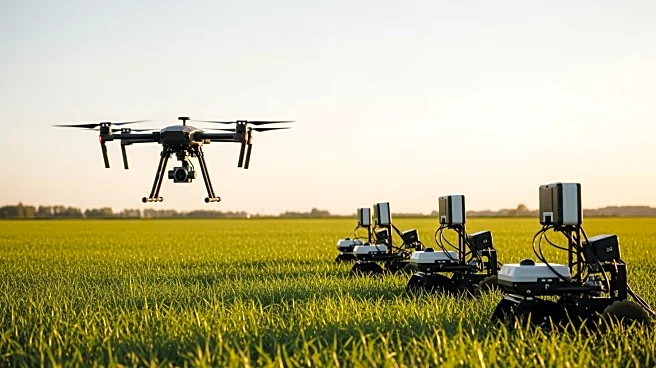What's Happening?
The dairy industry is experiencing a period of low milk futures prices due to increased production and herd expansion. However, the industry is also seeing significant investments in dairy processing,
with estimates reaching $10 billion for new or revamped plants. This expansion could lead to a tighter supply of dairy heifers and cows, potentially driving milk prices higher. The current market dynamics are influenced by the breeding of cows for beef calves, which keeps older cows in the herd longer, delaying their market entry.
Why It's Important?
The potential rebound in milk prices is crucial for dairy producers who have faced financial pressures from low prices. A tighter supply of dairy cows could lead to higher product values, benefiting producers. However, the situation also presents challenges, as high beef calf values may continue to influence herd management decisions. The dairy industry's response to these market conditions will impact consumer prices and the overall agricultural economy.
What's Next?
Dairy producers are advised to adopt strategic marketing approaches to navigate the potential price rebound. Protecting feed costs and exploring various marketing tools will be essential for managing production costs and maximizing profits. As milk prices potentially rise, consumer demand may adjust, influencing market dynamics. Producers will need to balance optimism with caution, ensuring that their strategies align with market realities.
Beyond the Headlines
The dairy industry's situation highlights the interconnectedness of agricultural markets, where decisions in one sector, such as beef production, can significantly impact another. The emphasis on strategic marketing and cost management reflects broader trends in agriculture, where producers must be agile and informed to succeed. The potential for higher milk prices also raises questions about consumer affordability and the long-term sustainability of dairy farming practices.











